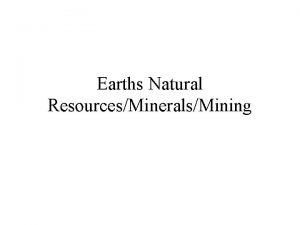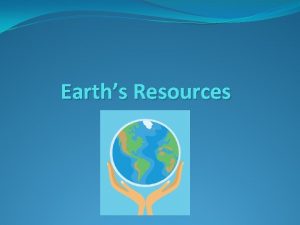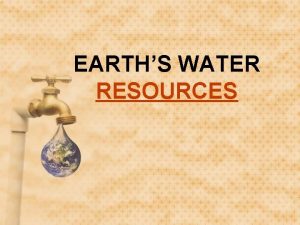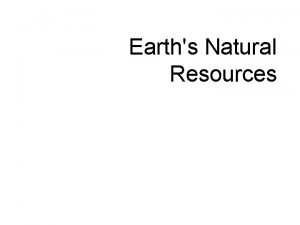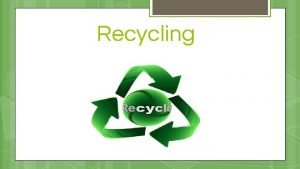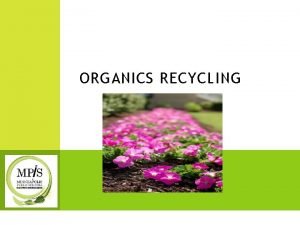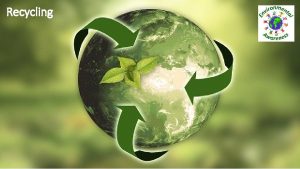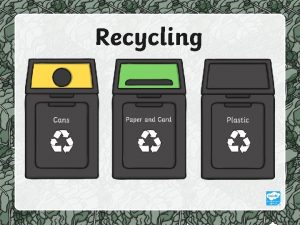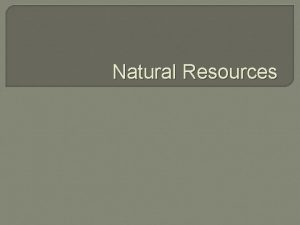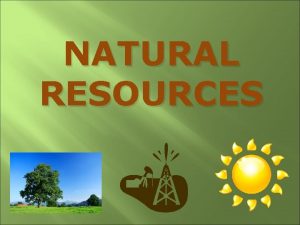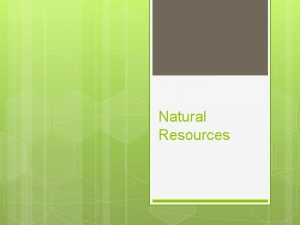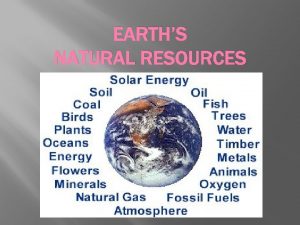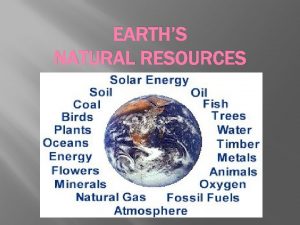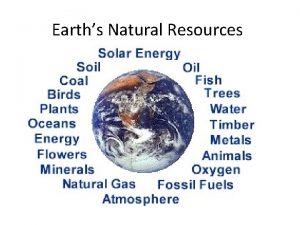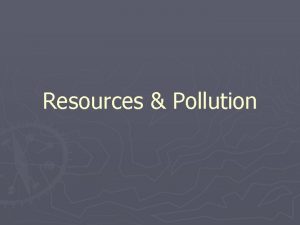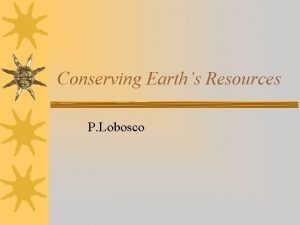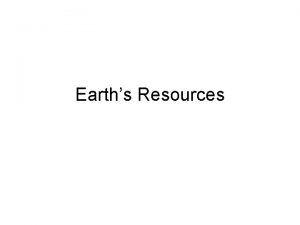RECYCLING NATURAL RESOURCES Although Earths natural resources like




















- Slides: 20

RECYCLING NATURAL RESOURCES

• Although Earth’s natural resources like oxygen, carbon, nitrogen and water are constantly being recycled, other natural resources used by man cannot be. • Resources can be classified as being renewable or non-renewable.

RENEWABLE RESOURCES • These can be reused or quickly replaced. • Examples are: trees, solar power

NON-RENEWABLE RESOURCES • These are in limited supply and once they are used up, they are gone forever. • Examples are: nuclear energy, coal, minerals

ENERGY RESOURCES • Energy makes it possible for humans to live a comfortable lifestyle like having transportation, entertainment and temperature controlled surroundings.

• Renewable energy: solar, wind, hydroelectric, water, biofuel (wood), geothermal.

• Non-renewable energy: fossil fuels like coal, oil and natural gas.

• Man is the only species to make and use paper, glass, metals, plastics and cloths. • These are used in schools, homes and offices and are usually readily discarded into the environment where they either break-down or accumulate posing pollution problems.

BIODEGRADABLE MATERIALS • Materials that are able to be broken down naturally into simpler, harmless forms by the action of micro-organisms.

NON-BIODEGRADABLE MATERIALS • Materials that cannot be broken down by microbes or take a very long time to do so (persist).

• To prevent non-renewable resources from running out, people are being taught to: 1. Reuse – use something again and again over time up to its potential for a different or same intended use instead of throwing away.

2. Reduce – to not overuse or overbuy needed products thus lessening the need to throw them away.

3. Recycle – to collect materials, separate them, remaking them into new items of their original form.

• Recycling - totally new product • Reusing does not damage the environment any further.

RECYCLING ADVANTAGES 1. Resources not used up quickly 2. Less land-fill space needed 3. Less water and soil pollution as waste decomposes 4. Less harm to animals 5. Less energy in recycling than making new

RECYCLING DISADVANTAGES 1. 2. 3. 4. Collection and transportation Separating Storage space before recycling Uses electricity

RECYCLING PAPER

RECYCLING PLASTIC

RECYCLING GLASS

RECYCLING METAL
 Earths layer foldable
Earths layer foldable Earths roation
Earths roation Whats earths moon called
Whats earths moon called Forest desert tundra grassland
Forest desert tundra grassland What are the families of the periodic table
What are the families of the periodic table Plasticity in earth's layers
Plasticity in earth's layers Whats earths moon called
Whats earths moon called Which layer of the earth slowly moves like putty
Which layer of the earth slowly moves like putty Earths early atmosphere contained
Earths early atmosphere contained Earths layers foldable
Earths layers foldable Earths major crustal plates
Earths major crustal plates Earths orbit seasons
Earths orbit seasons Brown earth soil profile
Brown earth soil profile Study of the earth's physical features
Study of the earth's physical features Earth's honey
Earth's honey Whats the name of earths moon
Whats the name of earths moon Pangea explanation
Pangea explanation Earths crust
Earths crust Earths interior
Earths interior Spring earth tilt
Spring earth tilt Atmosphere layers definition
Atmosphere layers definition





















